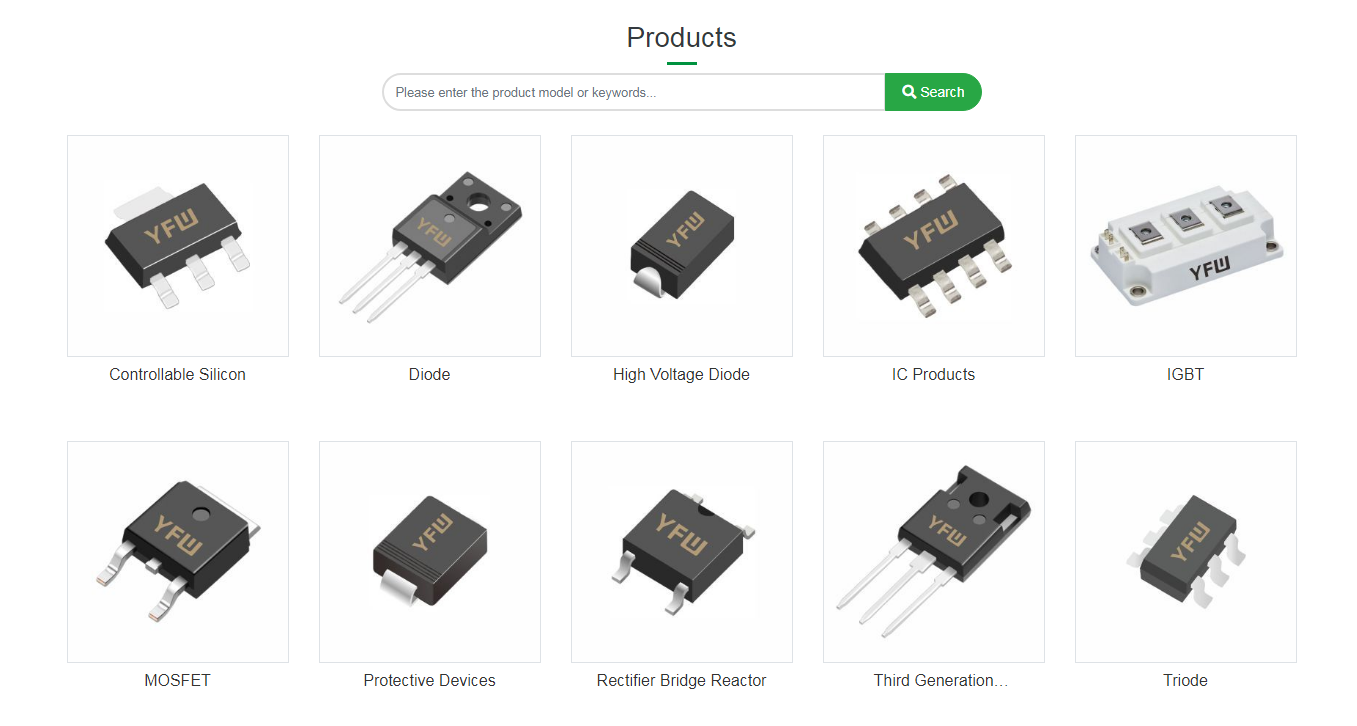Date:2025-03-18 Categories:Industry News Hits:938 From:Guangdong Youfeng Microelectronics Co., Ltd(YFW)
A photodiode is a semiconductor capable of converting optical signals into electrical signals. It works based on the photoelectric conversion effect, converting incident light energy into electrical energy to generate current. Photodiodes are widely in photoelectric detection, communication, photoelectric measurement and other fields. The following will detail the working principle and main characteristics of photodiodes. 1. Working principle ofodiodes: Photodiodes use a PN junction and work mainly based on the built-in electric field (built-in electric field) and the photoelectric effectphotoelectric effect). The photoelectric effect refers to the transfer of energy to matter when photons interact with matter, causing electrons to jump from the valence band to the conduction band forming a photo-generated carrier. When the photon energy is greater than or equal to the band gap energy of the material, the generation of photo-generated carriers will increase significantly.In a PN junction, the P region is rich in impurities, and the N region is doped with impurities. When forward and reverse bias are applied to the PN junction, ie. Vd>0 and Vd<0, the photodiode can operate. When forward biased, the photodiode becomes a conducting state to the presence of a large number of carriers in the P region, with a large reverse current. When light is incident on the PN junction, the number of photo-generated carriers, causing the current to increase. When reverse biased, the electric fields of the P and N regions form a potential barrier, causing the photodiode to be in a cutoff, with only a small reverse saturation current. When light is incident on the PN junction, photo-generated carriers move under the driving force of the electric field, thus generating a weak current. 2. Main characteristics of photodiodes: (1) Photoelectric response speed: Photodiodes have fast response speeds and can achieve high-frequency reception and transmission. This depends on the generation, diffusion, and collection speed of photo-generated carriers. (2) Spectral response range: Different types of photodes have different response capabilities for different wavelengths of light. Common photodiodes include visible light and infrared light, etc. The wavelength range determines the application field of the photodi. (3) Quantum efficiency: Quantum efficiency refers to the efficiency at which a photodiode converts incident light into electrons. It depends on the material and structure design of theodiode, generally ranging from 10% to 90% in the visible light range. (4) Linearity: The linearity of a photodiode to the degree of linear relationship between the input optical signal and the output current. Good linearity can ensure the accuracy and stability of photoelectric conversion. (5) Dark current Dark current refers to the current generated by the photodiode itself without illumination. The smaller the dark current, the higher the sensitivity of the photodiode. (6) time: Response time refers to the time it takes for a photodiode to generate a corresponding current from the time it receives an optical signal. A short response time means that theodiode can quickly respond to changing optical signals. In summary, photodiodes convert light energy into electrical energy through the photoelectric effect, with fast response, high quantum and wide spectral response range. This makes photodiodes important devices in photoelectric detection and communication fields

Previous: Abnormal conditions may occur in LED packaging glue
Next:NZT560A 1A 80V SOT-223 Marked NZT560A Small Signal Transistor Y Micro Brand